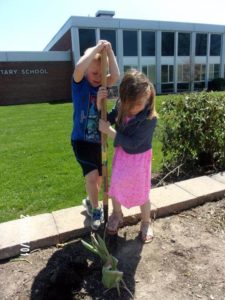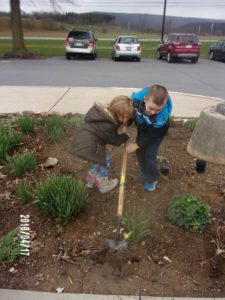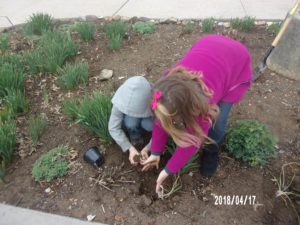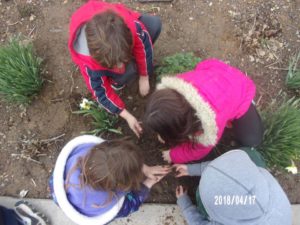Kristin Joivell Juniata Valley Elementary School
Plant Phenology Study
April 2017 and April 2018
In this month long study in April 2017 and April 2018, the kindergarten students compared and contrasted the growth of tulip and crocus bulbs in warmed and unwarmed plots. Students learned and observed phenological stages, monitored and documented temperatures, recorded data in plant phenology journals, and made inferences about the comparative growth of the plants in the two plots.
The plots in April 2017 looked like this:
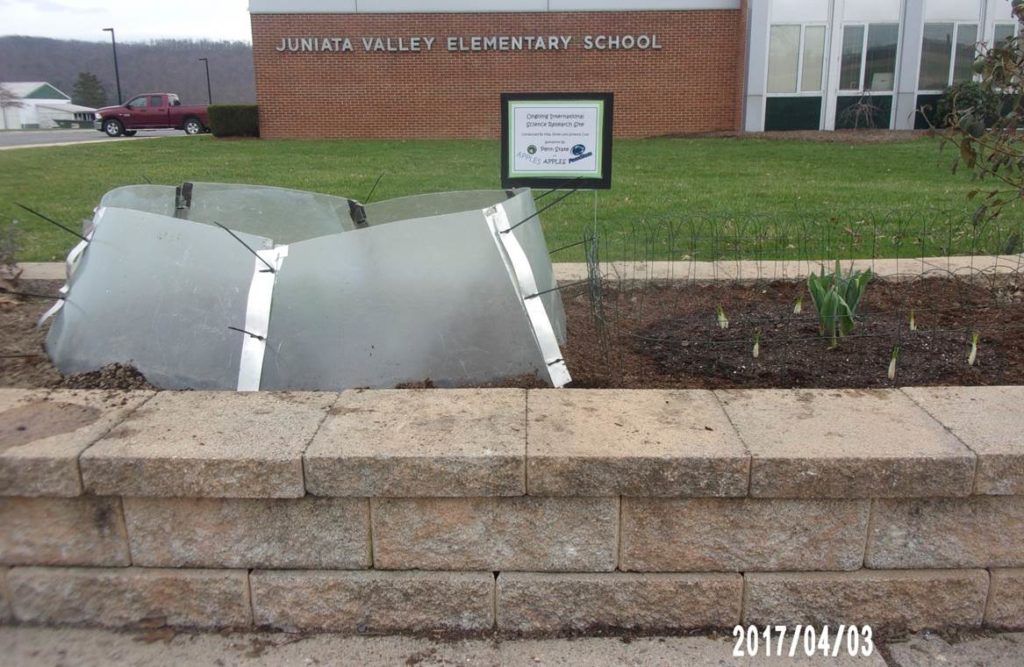
The plots in April 2018 looked like this:

Students recorded data into plant phenology journals during each of the studies using a letter to represent each of the plant phenophases focused on in our study. To indicate budding plants, the letter B was used. To indicate blooming plants, the letter O was used. To indicate wilting plants, the letter W was used. And to indicate plants in which the petals had fully fallen off, the letter X was used. In the photos below, you can see how this student collected data and reflected the plant phenophases using the letters to indicate their observations. The warmed Open Top Chamber Plot is featured in the first photo and the unwarmed Fenced Plot is featured in the second photo. Then, the third photo shows student phenophase observations for that same date’s observations.
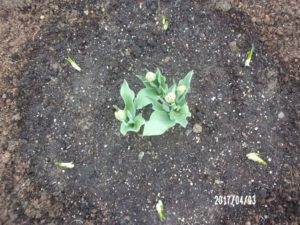
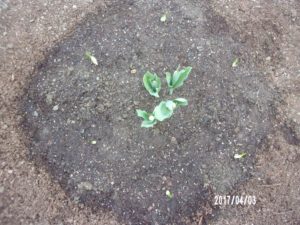
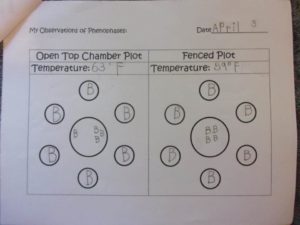
Throughout both years of study, students worked to make observations about plant phenophases and indicate the stages in their journals. Students became very skilled at immediately recognizing the phenophase for each plant. Students engaged in discussions about the differences in the plant phenophases in the warmed and unwarmed plots. Students used their own data from that they collected in their plant phenophase journals as evidence to back their claims about what they noticed happening and why they thought it was happening.
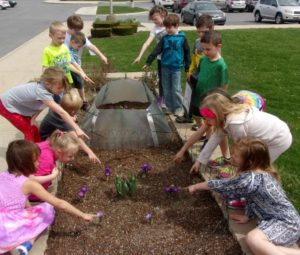
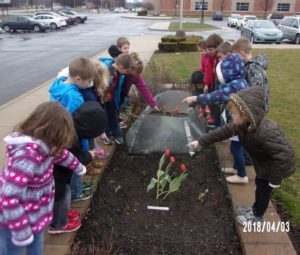
As the study ended after the second year in April 2018, the students worked to dismantle the plots from the raised garden bed. It was both a sad and an exciting day for the class–sad because our plant phenophase study was over, but exciting because the students knew the materials from the plots would be re-used for further work.
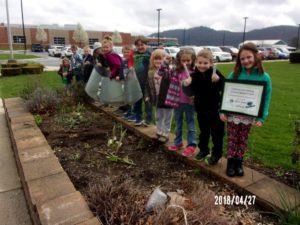
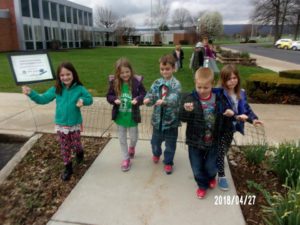
The fencing from the fenced plot found a new home as the protection for our class hemlock tree from the Seedlings for Schools Program, a partnership program of the Pennsylvania Game Commission’s Howard Nursery and the Wildlife for Everyone Foundation. Since the Seedlings for Schools initiative began in 2008, 1.3 million seedlings have been dispersed statewide to every county in Pennsylvania! The fencing will guard the boundary of our class hemlock tree’s growth during the next few years to help avoid damage from lawnmowers and other human impacts. The Open Top Chamber will find its new home next school year in 2018-2019 as development of our school garden lessons continue. It is planned for use as the warmed plot in a comparative study in crop production.

Don’t worry, our plants were not disposed of after the study! The students worked to transplant them into our flower garden near the raised garden beds on our school campus. First, they carefully dug up the bulbs from the raised garden beds. Then, they dug holes for bulb placement in the flower garden and placed the bulbs into the holes. Finally, they patted down the dirt around the newly transplanted bulbs. The tulip and crocus bulbs from our plant phenology study will keep growing year after year in this flower garden for students to enjoy as they arrive and depart from our school campus.
